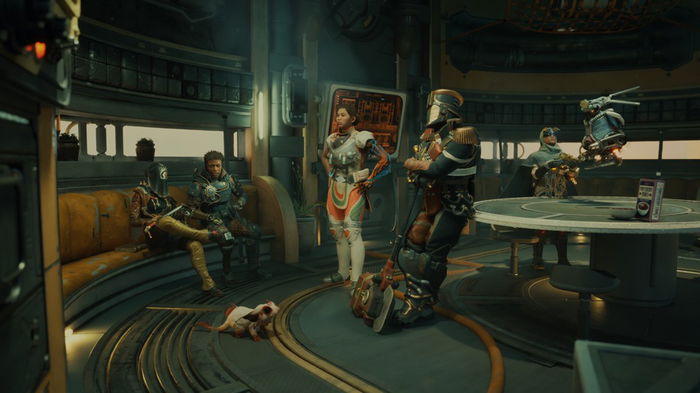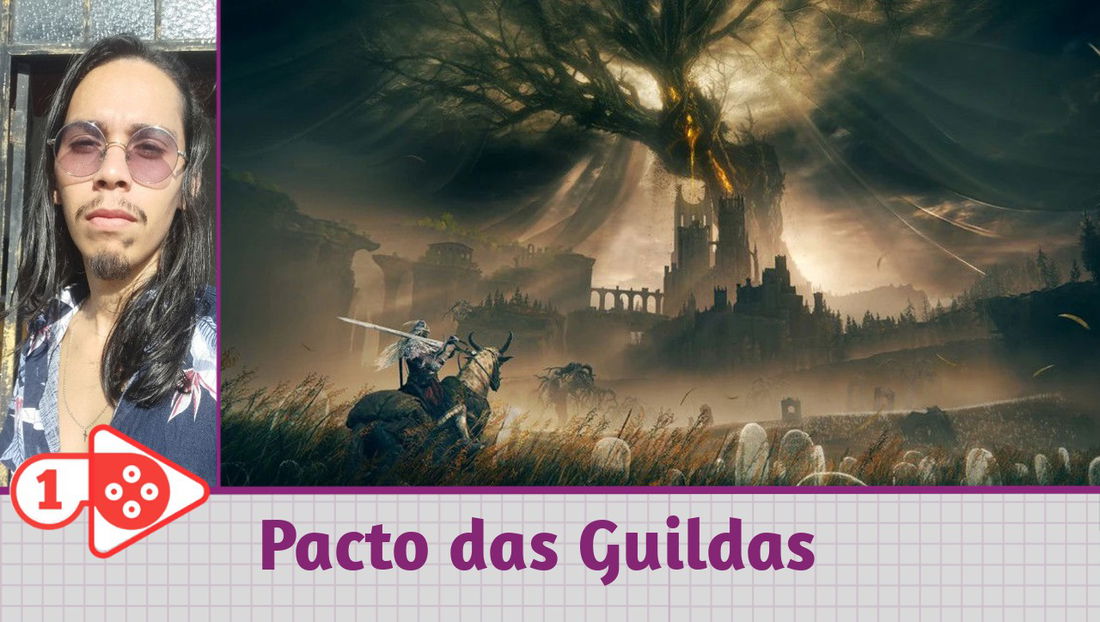Finally, The Outer Worlds 2 has arrived with the difficult task of succeeding one of the most charismatic and ironic RPGs of the last decade. Developed by Obsidian Entertainment, the game promises to be an evolution in everything the first title presented: larger worlds, more impactful choices, more fluid combat, and, of course, the same acidic humor that transformed the critique of megacorporations into a fun and uncomfortable experience at the same time.
The new adventure takes us to the Arcadia star system, a brand-new environment full of new planets, colonies, and corporate intrigue. This time, the player takes on the role of an agent of the Earth Directorate, sent to investigate mysterious rifts in space-time that threaten to destabilize the galaxy. The story unfolds in a universe that, even satirically, manages to provoke reflections on power, exploitation, and the cost of our decisions.
From the very first minutes, The Outer Worlds 2 shows that it’s not a simple sequel. It seeks to expand the scale, the impact of choices, and the feeling of freedom. The humor remains, but now with more drama and consequences that make each action more meaningful.
Setting and narrative
The Arcadia system is the new setting where everything happens, and it's as vibrant as it’s dangerous. The planets feature diverse biomes, futuristic cities corroded by corporate bureaucracies, and wild regions dominated by mutant creatures. Each location seems to exude its own story.
Obsidian has once again managed to balance social commentary and entertainment. Corporations are once again the main target of satire, but the game expands the discussion: now, the theme revolves around the manipulation of reality and the consequences of tampering with the fabric of the universe in pursuit of profit and control. It's a subtle but powerful critique of technological power and institutionalized greed.
The characters are another highlight. Companions and NPCs bring unique personalities, each with their own motivations and different reactions to the player's decisions. The writing remains sharp, full of sarcasm, irony, and biting commentary on the world they inhabit. This time, however, there’s more emotional weight: relationships with partners develop more deeply and can change drastically depending on their attitudes.

Gameplay and RPG systems
Right from the start, the leap in quality compared to the first game is noticeable. Movement is more fluid, exploration is more natural, and combat is much more responsive. Now we can run, slide, double jump, and perform more cinematic special attacks. Obsidian clearly sought more modern gameplay without abandoning the roots of traditional RPGs.
The character progression system has also been revamped. Creating the protagonist involves choosing backgrounds and traits, affecting both gameplay and dialogue. Each positive trait can be accompanied by a flaw, creating an interesting balance between strength and vulnerability.
The skill trees are more organized and offer distinct paths: combat, stealth, technology, and dialogue. It's perfectly possible to play as a diplomat who resolves everything through conversation, a stealthy hacker who avoids confrontation, or a sniper who prefers to solve everything with plasma and explosions.
Another highlight is the evolution of the "Tactical Time Dilation" system, which returns improved. This ability allows you to slow down time and precisely target specific points on enemies, bringing strategy to combat. The visual and sound effects of this mechanic have been improved, making each use more satisfying.
The feeling of freedom is constant. Almost every mission offers several approaches: infiltration, bribery, persuasion, hacking, or destruction. This variety ensures that the player feels in control of the narrative and the pace of progression.
In addition, companion control has also been improved. Now, it's possible to give direct orders during combat, combine abilities, and execute coordinated attacks. This gives a real sense of teamwork and makes each confrontation more dynamic.
Overall, the gameplay of The Outer Worlds 2 combines intense action, narrative freedom, and decisions with real weight. It's a rare balance between the satisfying shooting of a shooter and the strategic depth of a traditional RPG, a feat worthy of Obsidian's reputation.
Exploration and open world
While the areas in the first game seemed large but still limited, The Outer Worlds 2 corrects that feeling. Now, the universe truly feels vast. Each planet is a mini-world, with its own fauna, flora, and civilizations.
The mission structure makes you want to explore. It's common to stray from the main path to investigate ancient ruins, forgotten laboratories, and space stations full of secrets. Each environment rewards our curiosity with rare items, side stories, and discoveries that expand the universe's lore.
The visual design is stunning: vibrant colors, intense contrasts, and an art style that blends classic science fiction with retrofuturistic aesthetics. There's something fascinating about watching the sunset on an industrialized planet while a factory spews colored smoke across the horizon. This mix of beauty and toxicity perfectly encapsulates the game's essence: a spectacular world, but corrupted from within.
The soundtrack masterfully complements the immersion. Orchestral themes blend with retro synthesizers, creating an atmosphere reminiscent of both 1960s space adventures and modern cyberpunk films.

Characters and companions
The companions remain the emotional core of the game. Each one has their own personality, moral dilemmas, and rich side missions. The player can deepen bonds, enter into conflicts, or even break alliances depending on their choices.
The interaction between crew members is natural and dynamic. During missions, they talk, joke, disagree, and even criticize the player. This naturalness brings the crew to life, making each journey through space feel like a true shared experience and not just a group of NPCs following you.
One of the most memorable moments of my experience was when a companion, after witnessing a morally questionable decision, confronted me directly. This reaction made me rethink the direction I was taking. The Outer Worlds 2 is a game that makes you feel the weight of your choices, not only in the mechanical consequences but also in human relationships.
Humor and social commentary
Obsidian's humor is unmistakable, and here it reaches its peak. The game continues to mock rampant capitalism, corporate marketing, and the absurd logic of large corporations. The advertisements scattered across the planets, the bizarre slogans, and the dialogues with intergalactic executives are pure satire, sometimes hilarious, sometimes disturbing.
But there's an important difference: The Outer Worlds 2 has matured. The humor now coexists with denser themes, such as genetic manipulation, scientific ethics, and the impact of human decisions on physical reality. The result is a perfect balance between fun and reflection.
This duality is what makes the game so special. It makes you laugh and think at the same time. A mission can begin as a joke about corporate bureaucracy and end as a tragedy about human exploitation. This ability to alternate tones without seeming forced is one of the game's greatest qualities.
Technical performance and art direction
Technically, The Outer Worlds 2 is very solid. Loading times are short, the frame rate is stable, and bugs, so far, are minimal. The graphics engine has been improved, resulting in sharper textures, realistic lighting, and impressive visual effects in the space rifts.
The art direction is a spectacle in itself. The design of the weapons, planets, and space stations is very creative and full of personality. Every corner of the universe seems to have been carefully designed, from the colorful and dirty colonies to the clinical laboratories.
The style remains that half-cartoonish, half-realistic look that marked the first game. This mix maintains a light tone even in dramatic situations, something that reinforces the unique identity of the franchise.

Pros and Cons
Pros
- Freedom of approach: Each mission can be solved in multiple ways.
- Improved combat: more fluid, with more responsive weapons and more useful tactical abilities.
- Deep characters: companions and NPCs with complex stories and reactions.
- Engaging narrative: a balanced blend of satire, humor, and drama.
- Rewarding exploration: every corner of the universe holds interesting secrets and discoveries.
- Art direction: unmistakable aesthetic, with visually unique planets.
Cons
- Slow introduction: The initial pace may seem a little slow until the main plot kicks in.
- Simplified RPG systems: Some veterans may miss the greater depth in certain mechanics.
- Reliance on prior knowledge: Although it's a new story, references to the first game may go unnoticed by those just starting out.
- Occasional repetitive quests: Some side quests still follow the old "go there and get something" format.
Comparison with the first game
The first The Outer Worlds was a smaller-scale RPG, but big on personality. It won over fans with its humor, moral choices, and social commentary. The Outer Worlds 2 expands on all of that: the world is bigger, the combat is more dynamic, and the choices have more tangible consequences.
If the original felt like a mix between Fallout: New Vegas and a space comedy, the second is closer to a modern sci-fi opera with cinematic ambition. The comedic tone remains, but now there's room for genuinely emotional and philosophical moments.
Obsidian has managed to find an interesting middle ground: The Outer Worlds 2 is accessible to new players while also delivers depth and continuity for longtime fans.

Replayability and impact
One of the greatest merits of The Outer Worlds 2 is the desire it inspires to be replayed. Each choice truly changes the course of the narrative and the characters' reactions. The backgrounds and traits system encourages experimenting with different combinations to see how the universe reacts.
Furthermore, the space rifts, a new element of the plot, offer unique opportunities for exploration and challenges that vary according to the decisions made. This feeling that "the game remembers what you did" is what makes each journey different.
The emotional impact is impressive. The game makes you laugh, reflect, and sometimes even feel guilty. It mixes adventure and moral awareness, which places it among the most interesting RPGs of today.
Conclusion
The Outer Worlds 2 is an exemplary sequel: it respects the legacy of the original, but isn't afraid to grow, dare, and reinvent itself. Obsidian delivers a space RPG that combines humor, drama, social commentary, and action in a near-perfect balance.
The game is fun to play, beautiful to look at, and thought-provoking. It reminds us that choices matter, that power corrupts, and that even in the stars, humanity continues to repeat the same mistakes, only now with more technology and corporate slogans.
If you enjoy RPGs with real freedom, fascinating characters, and richly detailed universes, The Outer Worlds 2 is a must-play. Prepare to laugh, shoot, lie, and regret, sometimes all at once.
In a market saturated with soulless sequels, The Outer Worlds 2 shines like a burst of creativity in the middle of space.













— تعليقات 0
, ردود الفعل 1
كن أول من يعلق